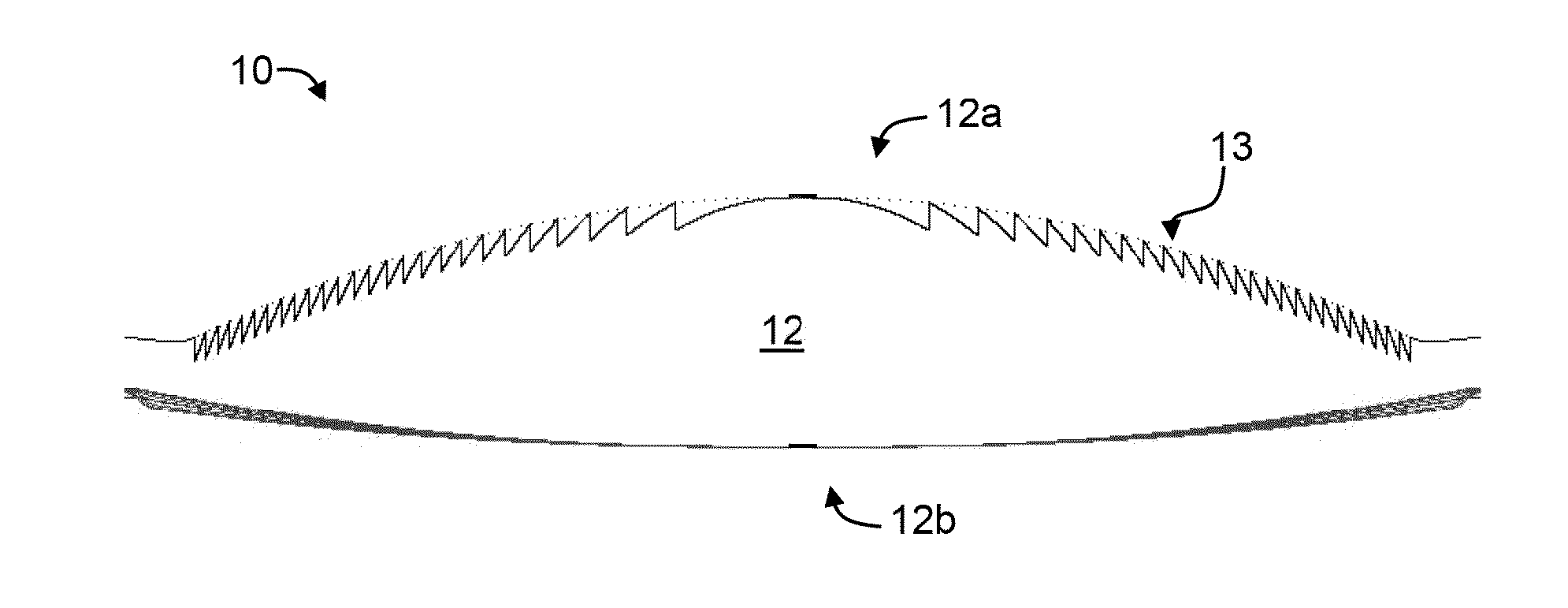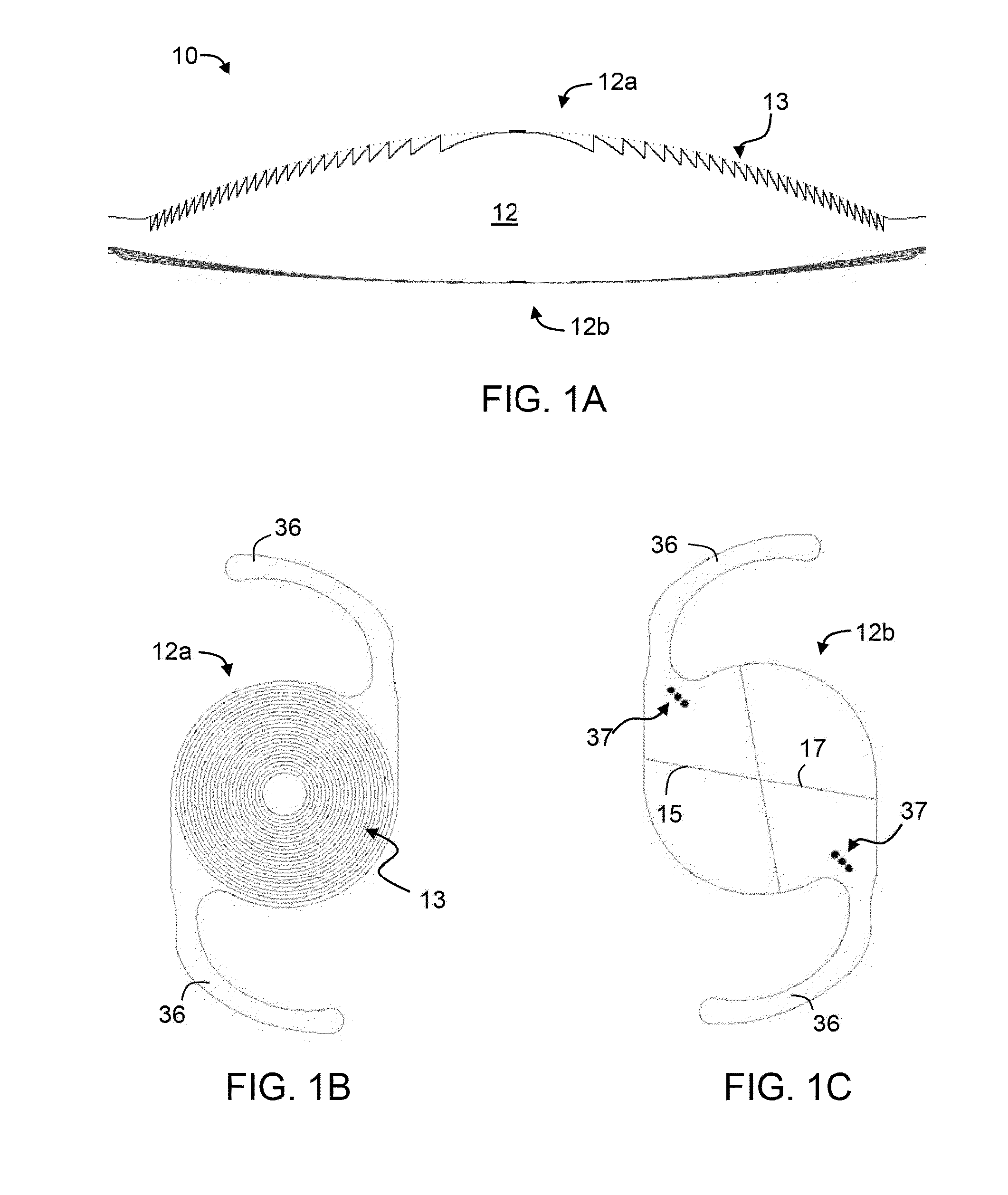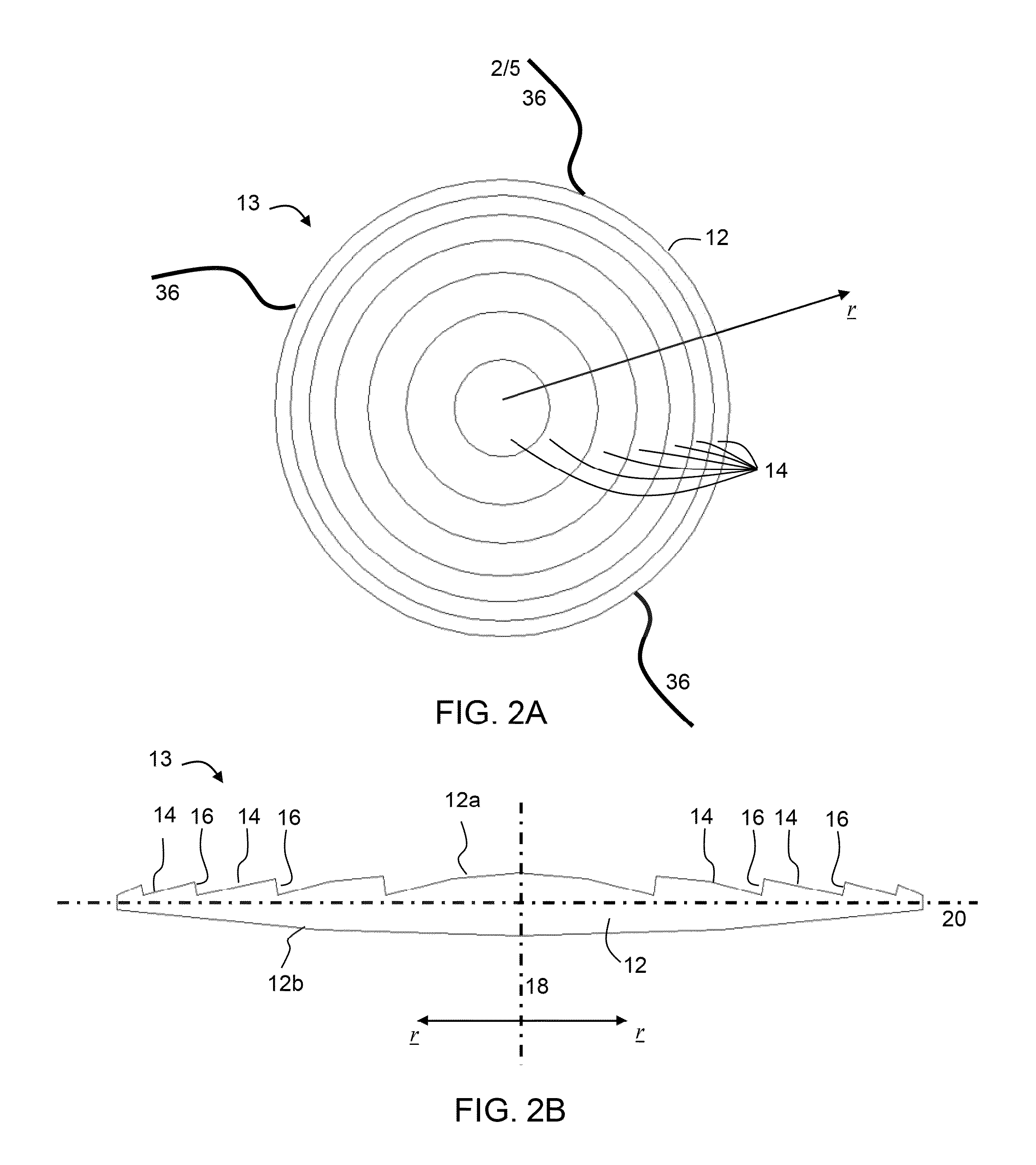Toric-diffractive lens
a technology of diffractive lenses and toric lenses, applied in the field of optics, can solve problems such as vision loss, vision deterioration, and reducing the perception of blue colors
- Summary
- Abstract
- Description
- Claims
- Application Information
AI Technical Summary
Benefits of technology
Problems solved by technology
Method used
Image
Examples
examples
[0333]Reference is now made to the following example, which together with the above descriptions illustrates some embodiments of the invention in a non limiting fashion.
Exemplary Lens Device with 30 Diffractive Zones
[0334]A prototype lens device was designed according to various exemplary embodiments of the present invention. The lens device included 30 zones and steps.
[0335]FIG. 5A illustrates the central (innermost) zone (referred to as zone 1), and FIG. 5B illustrates the peripheral (outermost) zone (referred to as zone 30). As shown, zone 1 has a step height H=1.83 microns and slope s=84°, and zone 30 has a step height H=0.09 microns and slope s=25°. Both zones exhibit diffractive for near vision and refractive power for far vision.
[0336]The values of step height H, step slope s and step width Ws for each of the 30 steps is summarized in Table 1, below.
TABLE 1Zone Step heightStep slope Step widthNo.[μm][degrees][μm]11.83840.1921.77840.1931.71840.1841.64830.1951.57830.1961.51830....
PUM
| Property | Measurement | Unit |
|---|---|---|
| width | aaaaa | aaaaa |
| heights | aaaaa | aaaaa |
| heights | aaaaa | aaaaa |
Abstract
Description
Claims
Application Information
 Login to View More
Login to View More - R&D
- Intellectual Property
- Life Sciences
- Materials
- Tech Scout
- Unparalleled Data Quality
- Higher Quality Content
- 60% Fewer Hallucinations
Browse by: Latest US Patents, China's latest patents, Technical Efficacy Thesaurus, Application Domain, Technology Topic, Popular Technical Reports.
© 2025 PatSnap. All rights reserved.Legal|Privacy policy|Modern Slavery Act Transparency Statement|Sitemap|About US| Contact US: help@patsnap.com



